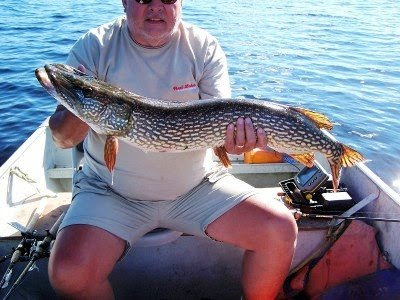

As we wait these last days for the ice to breakup in Red Lake, it's a good time to remind everyone about the importance of accurately measuring the northern pike they catch.
Under Ontario fishing regulations it is illegal to possess any northern pike that is 27.5 to 35.4 inches in length.
This measurement is made by placing the nose of the fish at one end of the ruler (provided in your boat) and then pinching the rays of the tail which makes it longer.
You should also be aware that a pike will lengthen a bit once it dies. For this reason we advise not keeping any northern pike larger than 26.5 inches which is one inch shorter than the legal limit.
For conservation reasons we also advise releasing all pike larger than the slot size unless you intend to have them mounted by a taxidermist. These big fish are almost all females and constitute the breeding stock of the lake.
It is a myth that really big fish no longer reproduce. In truth they continue reproducing until they die. This myth do doubt comes from the fact that the number of eggs per pound of fish decreases as the fish nears the end of its life. However, a big fish still produces more total eggs than does a smaller fish.
Incidentally, the slot size was chosen because it represents two-thirds of the reproductive pike in any Ontario lake. This is so not only because these fish are prime breeders but also because there are more of them compared to larger fish.
So here's a test: can you keep a fish that is exactly 27.5 inches?
No! A fish at the start of the slot size is just as illegal as one right in the middle.
Can you keep a fish that is 35.5 inches long? Yes, but would you stake your life that you've measured it this accurately? If you're wrong by 1/10 of an inch you will be fined!
Also, it is a bad idea to keep big fish to eat. By doing so you are not only hurting the fish population, you are also consuming a top predator that has lived a long time and so has accumulated more environmental toxins than young fish have. This is true whether you are fishing in a pristine Ontario fishing lake, in the ocean or in your local river.
It's a better choice to grab a photo and let it go. It will be even bigger next year and maybe the next time you meet it will be at the end of your kids or grandkids' fishing rod!


No comments:
Post a Comment